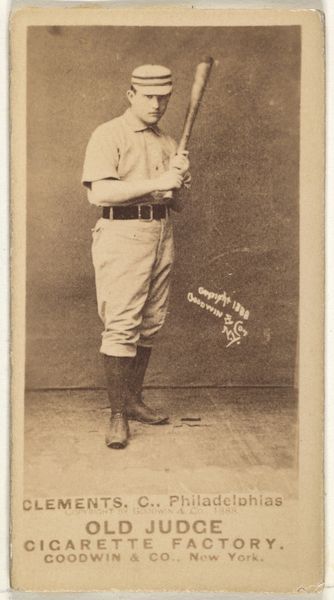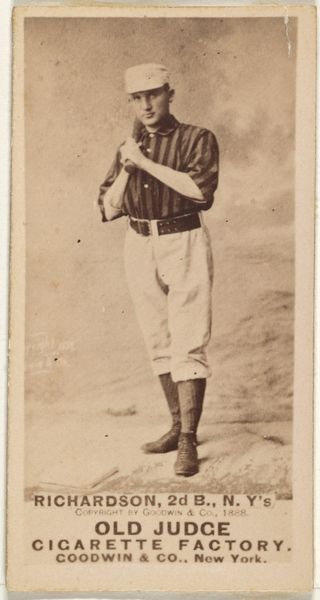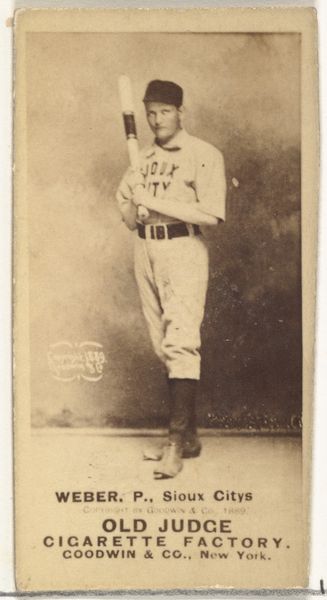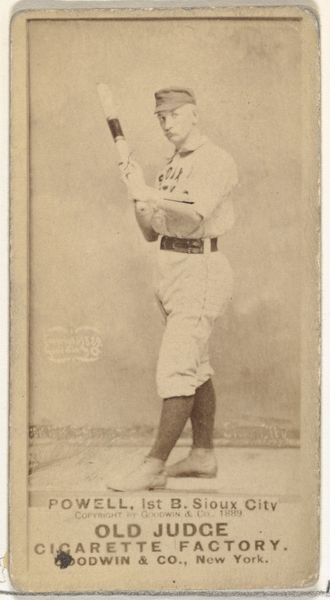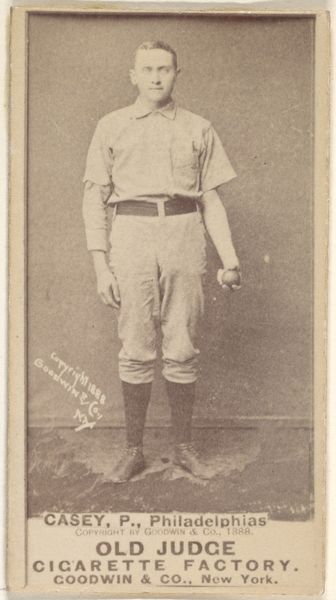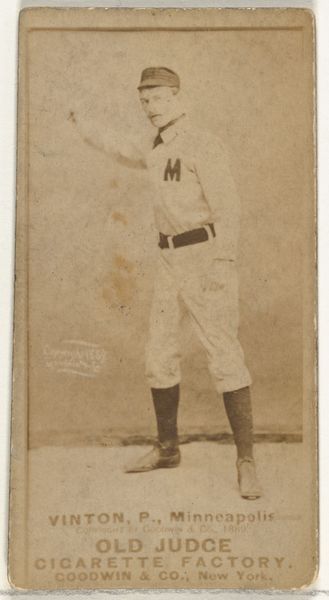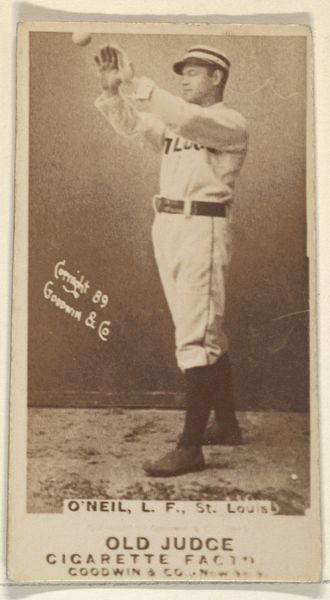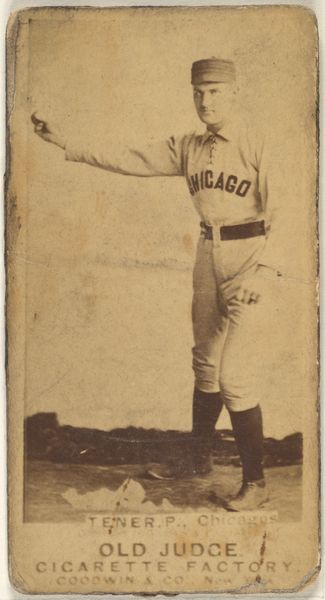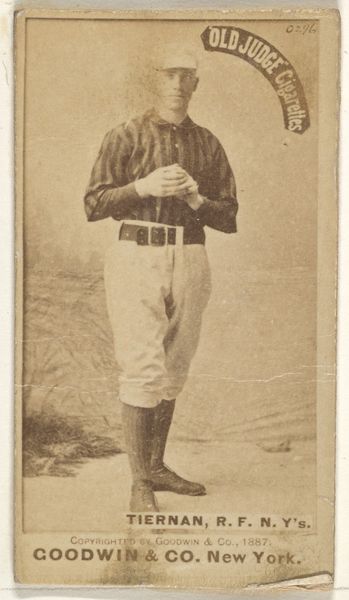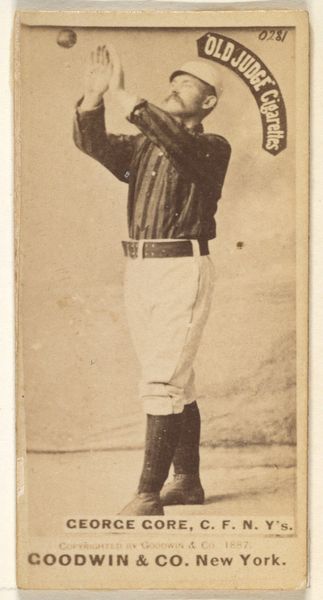
Sowders, Pitcher, Boston, from the Old Judge series (N172) for Old Judge Cigarettes 1888
0:00
0:00
drawing, print, photography, albumen-print
#
portrait
#
drawing
# print
#
baseball
#
figuration
#
photography
#
historical photography
#
19th century
#
men
#
genre-painting
#
golden font
#
athlete
#
albumen-print
Dimensions: sheet: 2 11/16 x 1 3/8 in. (6.9 x 3.5 cm)
Copyright: Public Domain
Curator: Here we have an albumen print from 1888, part of the "Old Judge" series by Goodwin & Company, featuring a portrait of Sowders, a pitcher for the Boston team, created as an advertisement for Old Judge Cigarettes. Editor: Immediately, I’m struck by the tonal range – the creamy whites of his uniform against the sepia backdrop creates an interesting figure-ground relationship, all within this tightly cropped rectangular format. It has a striking formal elegance. Curator: And that elegance is intertwined with commercial intent. The series itself tells us much about the intersection of leisure, labor, and consumption in late 19th-century America. Think about it, these were trade cards included in cigarette packs, miniature portraits meant to promote a lifestyle as much as tobacco. Editor: True, the baseball player becomes a commodity himself. He is presented with the signifier of his craft – the baseball bat. It's like a modern-day celebrity endorsement, only packaged with nicotine. Also, the composition, the careful arrangement of figure and ground – it all directs your eye towards the man, towards the brand, towards the very idea of athletic prowess. Curator: The "Old Judge" series also reveals some things about production: albumen prints are no easy feat, time intensive work. Goodwin and Company profited off of cheap labor in studios to create these, exploiting divisions along race, class, and gender. So this seemingly straightforward image belies a complicated reality of mass production. Editor: I see what you mean about those socio-economic underpinnings; even the choice of the typeface for “Old Judge Cigarette Factory” contributes to a sense of that industrial period. All elements point to consumption—cigarettes, of course, and baseball—and reinforce this singular image within a larger cultural narrative. Curator: Precisely. It allows us to see art, in its various forms, as not separate from, but utterly entangled with economic and social structures of its time. It invites us to really analyze the means of creating art, not just interpreting its aesthetic values. Editor: It has definitely brought a new context to my original reading. It seemed to be solely a portrait and brand vehicle, but its creation relies upon a complex system of exchange and labor—a truly valuable historical lens through image making.
Comments
No comments
Be the first to comment and join the conversation on the ultimate creative platform.
